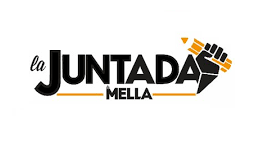
Assets, regardless of their size, are an integral part of every organization. In simple terms, assets are anything tangible or intangible. This includes everything IT components, inventory, property, and intellectual property owned by the company or leased to it. Assets can bring great value and add to any business.
ISO 55001 – Asset Management System
Assets must be managed effectively. ISO 55001 Australia helps you do just that. ISO 55001 international standard helps organizations optimize their assets’ lifetime value. ISO 55001 plays a critical role in industries with high capital expenditures and multiple assets.
ISO 55001 provides an effective asset management framework to implement, maintain, improve, and improve the control and governance of assets to realize the value and manage risk and opportunity. Some of these significant improvements have been noticed by organizations:
- Reduction of 15% in Operational Prices
- 10 % Increase in Utilization / Return of Capital Employed
- An effective management system focuses on creating a culture for continuous improvement.
- Performance of Assets (e.g. uptime, efficiency);
- Lower unit costs for products or services;
- Improved reliability and availability (mean times/distance between failures)
- Improves life cycle costs
Definitions & Terms Related To ISO 55001
Before we go into more detail, let us first examine the meanings of some terms.
Property: An item, thing, or entity with potential or actual financial value to an organization.
Value can be tangible or intangible, financial or non-financial, Physical assets usually refer to equipment, inventory, and properties owned by the organization.
Intangible Assets are assets that are not physical. These include brands, leases as well as digital assets. Use rights, licenses to intellectual property rights, reputation, and agreements.
Management of assets:
Asset Management
Assets exist to be of value to organizations. Asset management does not emphasize the asset as such, but on its potential value to the organization.
- This organizational objective can be translated into technical or financial goals.
- Leadership and workplace cultures are important factors in the realizations of value.
- This asset will achieve its desired purpose.
Scope and Application of ISO 55001
ISO 551001 applies to all types, sizes, and types of assets.
- Physical assets
- Information assets
- Intangible assets
- The most important assets
- Information and Communications Technology Assets (ICT)
- Infrastructure assets
- Moveable assets
Kindly notice:
- Physical assets can be equipment, inventory, or property.
- Intangible Assets are assets that are not physical. These include brands, leases as well as digital assets. Use rights, licenses, intellectual properties rights, reputation, and agreements.
Requirements for ISO 55001 Asset Management System
To comply ISO 55001, every organization should document the following information
Strategy and Planning
Service levels, policies, and corporate objectives
Strategic Asset Management Plans / Asset Management Strategies
Asset Management Plans
Process
Procedures and processes for asset-related matters
Process performance indicators and objectives
The location and attributes of assets, including ownership and design parameters
Operations and Service Delivery
Service levels and performance objectives, asset performance characteristics, Future operational needs
Maintenance Manager
Historical asset failures, betterment, replacement dates, and future maintenance requirements.
Risk Management
Contingency & Continuity Planning
Contract Management
Information concerning assets, vendors, and objectives
Key Steps for Implementing ISO 55001
If properly implemented, the International Standard will create an efficient Asset Management System to help achieve your organization’s goals, upgrade or replace existing infrastructure, as well as comply with regulatory requirements.
An Asset Management system is a system that combines interrelated and interdependent elements to create an asset management policy. These are the essential steps.
Step 1 Strategic Alignment of Organizational Objectives/Business Objectives
The organizational targets are usually developed from the organization’s strategic level planning activities. They can be documented in an organizational plan/corporate Plan.
Step 2 Asset Management Policies
An asset management strategy should define the principles of how an organization intends asset management to help it achieve its objectives.
Aligning the objectives of asset management with those of the organization and linking asset reports to financial records can improve the organization’s effectiveness, efficiency, and effectiveness.
Step 3 Strategic Asset Management Plan
“Documented data that specifies how organizational targets are to be turned into asset manage objectives, the approach used for developing asset plans and the role played by the asset administration system in supporting the attainment of these asset management objectives.”
From organizational planning, you can derive a strategic plan for asset management.
Step 4 Asset Management Objectives
- The asset should match the product/service needs of the Organization.
- The asset-management objectives translate the desired outcomes (by product/service to be provided by assets) into activities typically described by the asset management program(s).
- Asset performance (e.g. uptime, efficiency)
- The unit price of a product, or service
- Reliability (mean distance between failures and time)
- Asset condition, performance, health score
- Life cycle costs
- Life expectancy
- Asset energy performance
- The total cost
- Return on capital
